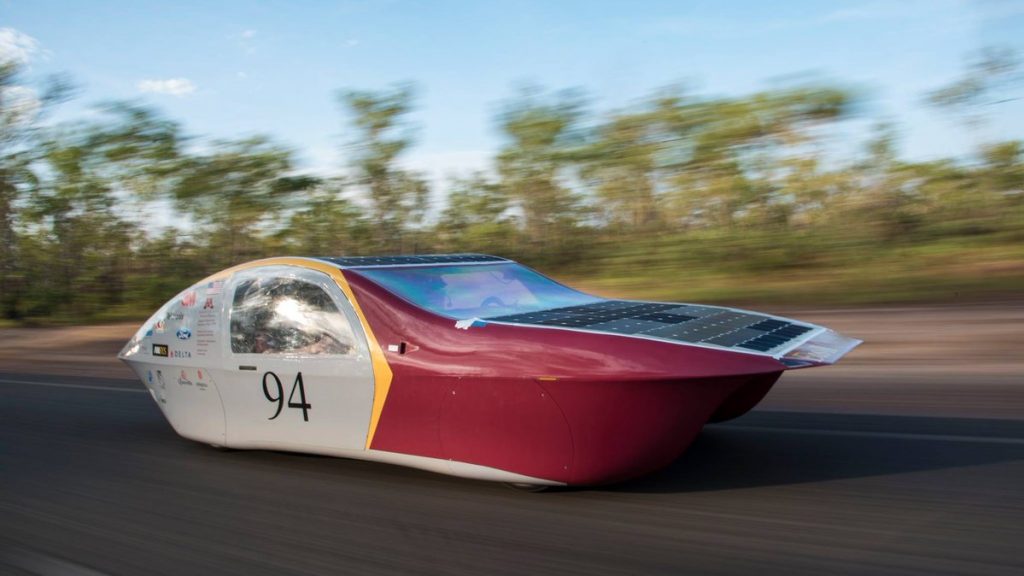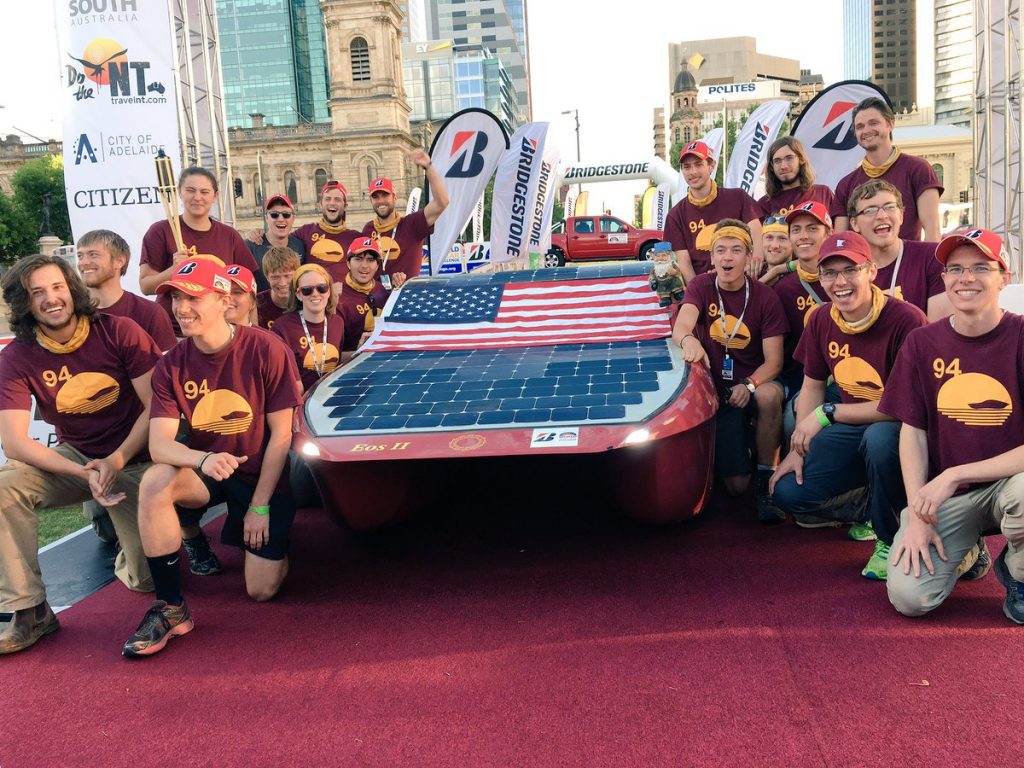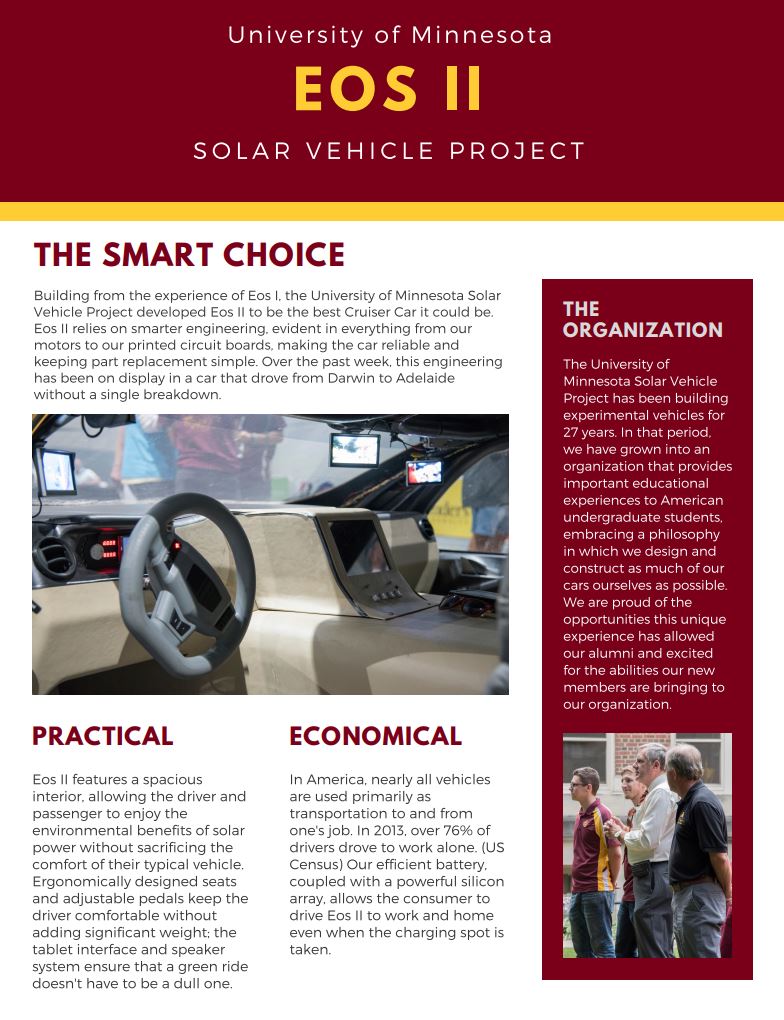The University of Minnesota Solar Vehicle Project (UMNSVP) recently completed the 2017 Bridgestone World Solar Challenge using a vehicle they designed and created from start to finish. Coastal Enterprises was honored to donate Precision Board HDU to the team for use in fabricating their vehicle. This is their story.

The team spent two years developing Eos II, a solar-electric vehicle prototype. They used blocks of PBLT-18 to create the molds for Eos II, into which carbon fiber sheets were laid to create the body itself.
Once the vehicle was complete, the team headed to Australia to challenge some of the best solar car teams in the world in Australia in the 2017 Bridgestone World Solar Challenge. Competitors’ vehicles charged primarily from the sun as they traversed some of the world’s most challenging landscapes in this 3,000 kilometer race from Darwin to Adelaide.
The team vehicle had to go through “scrutineering” before race day. This is a process where a group of scrutineers review competition cars to ensure they are within technical specs for the race and to also ensure safety and fair play.
Some shots of the car getting ready to take off…and on the road during the race.
We are very proud, Eos II made it ALL 3022 km on its on power, and with almost 0 breakdowns! Thank you to all our sponsors and fans! #BWSC17
— UMNSVP (@umnsvp) October 13, 2017
At the finish line after a long race.

The University of Minnesota Solar Vehicle Project was founded by a group of undergraduate students from the U of M College of Science and Engineering in 1990 and competed in the 1993 GM Sunrayce with its first Solar Car, Aurora I. Since then, The Solar Vehicle Project has remained true to its original foundation as a student administered, designed, and built project that teaches members about engineering and management in a complete product development environment. The team has built thirteen solar vehicles, and is one of the most decorated teams in America.
Eos II, the team’s most recent vehicle, exemplifies the change of direction that the University of Minnesota Solar Vehicle Project has taken in recent years. The team was the first American team to compete in the Cruiser Class at the World Solar Challenge. In addition to speed, this class focuses on practicality and number of people in the car. This poses several new design criteria to give the team room to innovate.
Last year, the Solar Vehicle Project placed fourth in the 2016 Formula Sun Grand Prix and tenth in the 2016 American Solar Challenge, the only cruiser competitor to qualify for either race. Next summer, Eos II will compete in the first ever Cruiser Class at the 2018 American Solar Challenge along the Oregon Trail!
You can see all the updates from fabrication through race day and re-live the team’s racing experience through their Twitter feed and Facebook page or on the official website.
If you are a school interested in a Precision Board donation for your project, please submit a Contact Us form and we’ll get back to you!
